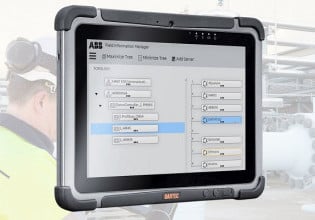Schneider’s “Infrastructure of the Future” Addresses Challenges Facing Smart, Green Urbanization
Schneider Electric unveils an integrated solution that promotes creating more sustainable and resilient infrastructures for green urban environments.
Schneider Electric (SE) develops and supplies process and energy technologies enabling businesses to work more efficiently while undertaking sustainable practices that lower negative impact on the environment. The company offers digital twin technology, end-point to cloud integration, and business management capabilities.
Recently, SE announced a set of open and interoperable software solutions designed to help create a greener “Infrastructure of the Future.” This Infrastructure of the Future is hoped to help enhance energy utilization and manage energy consumption for businesses and economies across the globe.

Solar power can provide electricity to promote remote and off-grid development.
Urbanization is the process of people migrating to cities and towns with the goal of living in a modernized society. Urbanization has been an ongoing process since the first industrial revolution. It is thought that half of the world’s population will live in urban areas by 2050.
Climate change causes the frequency of flooding to increase, which impacts infrastructure, public health, and quality of life. Climate change affects the way people live in cities. It impacts the most vulnerable populations, such as children and elderly people, who are more sensitive to heatwaves and pollution than adults.
The Infrastructure of the Future
Schneider’s Infrastructure of the Future is comprised of an integrated suite of open, interoperable software solutions. These solutions have been designed to help create a more sustainable, modern, efficient, resilient, and inclusive urban infrastructure. By doing so, the growing population will have the ability to use energy without excess, while maintaining the environment’s integrity.
In a recent news release, the Executive Vice President for Power Systems and Services at SE, Frédéric Godemel, said, “infrastructure systems are under immense pressure to deliver resilient and reliable services. With urban environments also relying heavily on infrastructure’s ability to handle electrification of public transport, we need a green revolution in infrastructure to keep energy flowing, transport moving, E-mobility and protect business and society against climate change.”

Monitoring the power delivery infrastructure is critical to long-term sustainability.
This is especially true in instances where states are receiving hotter or colder temperatures than usual, such as last year’s Texas winter storm. Temperatures dipped below freezing for 10 days in 2021. Due to the freezing temperatures, the power grid demanded 10 gigawatts over its threshold, leading to many Texans losing power. SE’s Infrastructure of the Future is trying to deter similar future incidents.
Unique Features
Unique features of SE’s Infrastructure of the Future include:
- EcoStructure for E-mobility: A holistic solution designed to help homeowners, building and business owners, as well as fleet operators to manage electricity loads, while maintaining energy supply and charging convenience at a suitable price.
- ETAP Train Power Simulation - eTraX: A software solution enabling the design, analysis, and management of AC and DC railway infrastructure. This solution by ETAP is a part of SE’s agnostic software portfolio.
- AVEVA Unified Operations Centre: A solution helping infrastructure operators to visualize enterprise processes/operations, maintain them, enhance collaboration, and boost facility productivity.
- EcoStruxure Energy and Sustainability Services: Providing a way for customers to manage energy use while economizing on efficiency. Businesses can buy energy with a right-sized sourcing strategy while doing so sustainably.
- EcoStruxure Microgrid Advisor: Cloud-based software connecting distributed energy resources. The resources can be collected and optimized concerning when and how to consume, produce, and store energy.
As urban environments continue to develop, it is critical for infrastructure to develop without simply looking at current needs, but future requirements as well. Electric vehicles (EVs), smarter grid systems, and a careful examination of energy usage will be critical aspects that guide the growth of urban environments.






